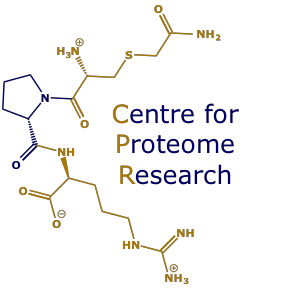SRM to measure protein turnover
2012 Filed in: Label: Amino acid | Human
Lee, A. Y., Yates, N. A., Ichetovkin, M., Deyanova, E., Southwick, K., Fisher, T. S. et al. (2012). Measurement of fractional synthetic rates of multiple protein analytes by triple quadrupole mass spectrometry. Clin Chem, 58(3), 619-627. [PUBMED]
BACKGROUND: Current approaches to measure protein turnover that use stable isotope-labeled tracers via GC-MS are limited to a small number of relatively abundant proteins. We developed a multiplexed liquid chromatography-selected reaction monitoring mass spectrometry (LC-SRM) assay to measure protein turnover and compared the fractional synthetic rates (FSRs) for 2 proteins, VLDL apolipoprotein B100 (VLDL apoB100) and HDL apoA-I, measured by both methods. We applied this technique to other proteins for which kinetics are not readily measured with GC-MS. METHODS: Subjects were given a primed-constant infusion of [5,5,5-D(3)]-leucine (D(3)-leucine) for 15 h with blood samples collected at selected time points. Apolipoproteins isolated by SDS-PAGE from lipoprotein fractions were analyzed by GC-MS or an LC-SRM assay designed to measure the M+3/M+0 ratio at >1% D(3)-leucine incorporation. We calculated the FSR for each apolipoprotein by curve fitting the tracer incorporation data from each subject. RESULTS: The LC-SRM method was linear over the range of tracer enrichment values tested and highly correlated with GC-MS (R(2) > 0.9). The FSRs determined from both methods were similar for HDL apoA-I and VLDL apoB100. We were able to apply the LC-SRM approach to determine the tracer enrichment of multiple proteins from a single sample as well as proteins isolated from plasma after immunoprecipitation. CONCLUSIONS: The LC-SRM method provides a new technique for measuring the enrichment of proteins labeled with stable isotopes. LC-SRM is amenable to a multiplexed format to provide a relatively rapid and inexpensive means to measure turnover of multiple proteins simultaneously.
BACKGROUND: Current approaches to measure protein turnover that use stable isotope-labeled tracers via GC-MS are limited to a small number of relatively abundant proteins. We developed a multiplexed liquid chromatography-selected reaction monitoring mass spectrometry (LC-SRM) assay to measure protein turnover and compared the fractional synthetic rates (FSRs) for 2 proteins, VLDL apolipoprotein B100 (VLDL apoB100) and HDL apoA-I, measured by both methods. We applied this technique to other proteins for which kinetics are not readily measured with GC-MS. METHODS: Subjects were given a primed-constant infusion of [5,5,5-D(3)]-leucine (D(3)-leucine) for 15 h with blood samples collected at selected time points. Apolipoproteins isolated by SDS-PAGE from lipoprotein fractions were analyzed by GC-MS or an LC-SRM assay designed to measure the M+3/M+0 ratio at >1% D(3)-leucine incorporation. We calculated the FSR for each apolipoprotein by curve fitting the tracer incorporation data from each subject. RESULTS: The LC-SRM method was linear over the range of tracer enrichment values tested and highly correlated with GC-MS (R(2) > 0.9). The FSRs determined from both methods were similar for HDL apoA-I and VLDL apoB100. We were able to apply the LC-SRM approach to determine the tracer enrichment of multiple proteins from a single sample as well as proteins isolated from plasma after immunoprecipitation. CONCLUSIONS: The LC-SRM method provides a new technique for measuring the enrichment of proteins labeled with stable isotopes. LC-SRM is amenable to a multiplexed format to provide a relatively rapid and inexpensive means to measure turnover of multiple proteins simultaneously.
